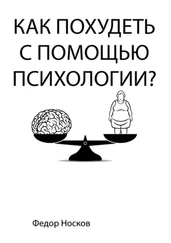Lakoff, G. & Johnson, M. (1980). The metaphorical structure of the human conceptual system. Cognitive Science, 4(2), 195–208.
Langer, E., Blank, A. & Chanowitz, B. (1978). The mindlessness of ostensibly thoughtful action: The role of "placebic" information in interpersonal interaction. Journal of Personality and Social Psychology, 36(6), 635–642.
Latané, B. & Darley, J. M. (1968). Group inhibition of bystander intervention in emergencies. Journal of Personality and Social Psychology, 10 (3), 215–221.
Lee, L., Frederick, S. & Ariely, D. (2006). Try it, you'll like it: The influence of expectation, consumption, and revelation on preferences for beer. Psychological Science, 17 (12), 1054–1058.
Lee, A. Y. & Labroo, A. A. (2004). The effect of conceptual and perceptual fluency on brand evaluation. Journal of Marketing Research, 151–165.
Leippe, M. R. & Eisenstadt, D. (1994). Generalization of dissonance reduction: Decreasing prejudice through induced compliance. Journal of Personality and Social Psychology, 67 (3), 395–413.
Lindgaard, G., Fernandes, G., Dudek, C. & Brown, J. (2006). Attention web designers: You have 50 milliseconds to make a good first impression! Behaviour & Information Technology, 25(2), 115–126.
Lynn, M. & McCall, M. (2009). Techniques for increasing servers' tips: How generalizable are they? Cornell Hospitality Quarterly, 50(2), 198–208.
MacInnis, D. J., Moorman, C. & Jaworski, B. J. (1991). Enhancing and measuring consumers' motivation, opportunity, and ability to process brand information from ads. Journal of Marketing, 32–53.
Mackie, D. M. & Worth, L. T. (1991). Feeling good, but not thinking straight: The impact of positive mood on persuasion. Emotion and Social Judgments, 23, 210–219.
Macrae, C. N. & Johnston, L. (1998). Help, I need somebody: Automatic action and inaction. Social Cognition, 16 (4), 400–417.
Madey, S. F., Simo, M., Dillworth, D., Kemper, D., Toczynski, A. & Perella, A. (1996). They do get more attractive at closing time, but only when you are not in a relationship. Basic and Applied Social Psychology, 18 (4), 387–393.
Martin, P. Y., Hamilton, V. E., McKimmie, B. M., Terry, D. J. & Martin, R. (2007). Effects of caffeine on persuasion and attitude change: The role of secondary tasks in manipulating systematic message processing. European Journal of Social Psychology, 37 (2), 320–338.
McClure, S. M., Li, J., Tomlin, D., Cypert, K. S., Montague, L. M. & Montague, P. R. (2004). Neural correlates of behavioral preference for culturally familiar drinks. Neuron, 44 (2), 379–387.
McDaniel, M. A., Einstein, G. O., DeLosh, E. L., May, C. P. & Brady, P. (1995). The bizarreness effect: It's not surprising, it's complex. Journal of Experimental Psychology. Learning, Memory, and Cognition, 21 (2), 422.
McFerran, B., Dahl, D. W., Fitzsimons, G. J. & Morales, A. C. (2010a). Might an overweight waitress make you eat more? How the body type of others is sufficient to alter our food consumption. Journal of Consumer Psychology, 20 (2), 146.
McFerran, B., Dahl, D. W., Fitzsimons, G. J. & Morales, A. C. (2010b). I'll have what she's having: Effects of social influence and body type on the food choices of others. Journal of Consumer Research, 36 (6), 915–929.
McGuire, W. J. (1964). Inducing resistance to persuasion: Some contemporary approaches. Advances in Experimental Social Psychology, 1, 192–229.
Meier, B. P. & Robinson, M. D. (2004). Why the sunny side is up: Associations between affect and vertical position. Psychological Science, 15 (4), 243–247.
Meston, C. M. & Frohlich, P. F. (2003). Love at first fright: Partner salience moderates roller-coaster-induced excitation transfer. Archives of Sexual Behavior, 32 (6), 537–544.
Milgram, S. (1973). Behavioral study of obedience. Journal of Abnormal and Social Psychology, 67(4), 371–378.
Miller, G. (1956). The magical number seven, plus or minus two: Some limits on our capacity for processing information. The Psychological Review, 63, 81–97.
Miller, N. & Campbell, D. T. (1959). Recency and primacy in persuasion as a function of the timing of speeches and measurements. Journal of Abnormal Psychology, 59(1), 1.
Mita, T. H., Dermer, M. & Knight, J. (1977). Reversed facial images and the mere-exposure hypothesis. Journal of Personality and Social Psychology, 35(8), 597–601.
Mogilner, C., Rudnick, T. & Iyengar, S. S. (2008). The mere categorization effect: How the presence of categories increases choosers' perceptions of assortment variety and outcome satisfaction. Journal of Consumer Research, 35 (2), 202–215.
Monahan, J. L., Murphy, S. T. & Zajonc, R. B. (2000). Subliminal mere exposure: Specific, general, and di use effects. Psychological Science, 11 (6), 462–466.
Montoya, R. M., Horton, R. S. & Kirchner, J. (2008). Is actual similarity necessary for attraction? A meta-analysis of actual and perceived similarity. Journal of Social and Personal Relationships, 25 (6), 889–922.
Morales, A. C. & Fitzsimons, G. J. (2007). Product contagion: Changing consumer evaluations through physical contact with "disgusting" products. Journal of Marketing Research, 272–283.
Moreland, R. L. & Beach, S. R. (1992). Exposure effects in the classroom: The development of affinity among students. Journal of Experimental Social Psychology, 28 (3), 255–276.
Murdock Jr., B. B. (1962). The serial position effect of free recall. Journal of Experimental Psychology, 64 (5), 482.
Mussweiler, T. & Strack, F. (2000). Numeric judgments under uncertainty: The role of knowledge in anchoring. Journal of Experimental Social Psychology, 36 (5), 495–518.
Nedungadi, P. (1990). Recall and consumer consideration sets: Influencing choice without altering brand evaluations. Journal of Consumer Research, 263–276.
Nickerson, R. S. (1998). Confirmation bias: A ubiquitous phenomenon in many guises. Review of General Psychology, 2 (2), 175.
Niedenthal, P. M., Barsalou, L. W., Winkielman, P., Krauth-Gruber, S. & Ric, F. (2005). Embodiment in attitudes, social perception, and emotion. Personality and Social Psychology Review, 9 (3), 184–211.
Nuttin, J. M. (1985). Narcissism beyond gestalt and awareness: The name letter effect. European Journal of Social Psychology, 15 (3), 353–361.
Ono, H. (1967). Difference threshold for stimulus length under simultaneous and nonsimultaneous viewing conditions. Perception & Psychophysics, 2 (5), 201–207.
Parker, J. R. & Lehmann, D. R. (2011). When shelf-based scarcity impacts consumer preferences. Journal of Retailing, 87 (2), 142–155.
Patall, E. A., Cooper, H. & Wynn, S. R. (2010). The effectiveness and relative importance of choice in the classroom. Journal of Educational Psychology, 102(4), 896.
Pelham, B. W., Carvallo, M. & Jones, J. T. (2005). Implicit egotism. Current Directions in Psychological Science, 14 (2), 106–110.
Pelham, B. W., Mirenberg, M. C. & Jones, J. T. (2002). Why Susie sells seashells by the seashore: Implicit egotism and major life decisions. Journal of Personality and Social Psychology, 82 (4), 469–487.
Pepitone, A. & DiNubile, M. (1976). Contrast effects in judgments of crime severity and the punishment of criminal violators. Journal of Personality and Social Psychology, 33(4), 448.
Perdue, C. W., Dovidio, J. F., Gurtman, M. B. & Tyler, R. B. (1990). Us and them: Social categorization and the process of intergroup bias. Journal of Personality and Social Psychology, 59 (3), 475–486.
Petty, R. E. & Cacioppo, J. T. (1984). Source factors and the elaboration likelihood model of persuasion. Advances in Consumer Research, 11 (1), 668–672.
Petty, R. E. & Cacioppo, J. T. (1986). The elaboration likelihood model of persuasion. In L. Berkowitz (Ed.) Advances in Experimental Social Psychology(Vol. 19, pp. 121–203). New York: Academic Press.
Читать дальше
Конец ознакомительного отрывка
Купить книгу
![Ник Коленда Система убеждения [Как влиять на людей с помощью психологии] обложка книги](/books/27717/nik-kolenda-sistema-ubezhdeniya-kak-vliyat-na-lyudej-cover.webp)

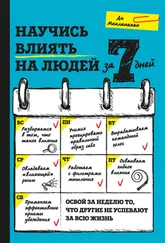
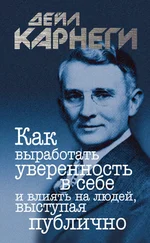
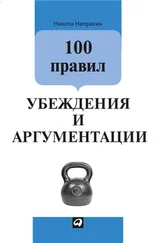
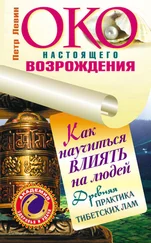


![Ангелина Шам - Ангел влияния [Технологии коммуникативного гипноза для убеждения и мотивации людей] [litres]](/books/408070/angelina-sham-angel-vliyaniya-tehnologii-kommunikati-thumb.webp)

